AGRICULTURE • ARTS • CULTURE • COMMUNITY

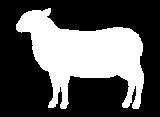
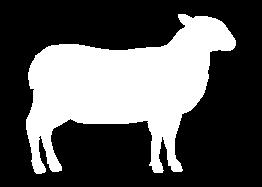



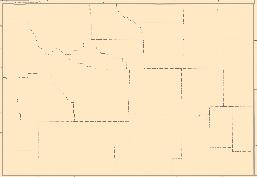


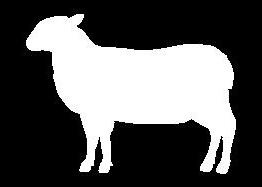


















Wyoming’s sheep and wool industry feeds and clothes the world all while remaining environmentally sustainable. Wool is a natural fiber that does not pollute the world’s oceans and is the result of natural proesses that convert vegetation into products that are necessary for humans, such as warm clothes in cold climates. Meat production is the result of those same natural cycles in which the sheep consume vegetation on lands not otherwise suitable for agriculture.
Ranchlands are essential economic components of our rural communities and we utilize our sheep flocks to provide ecosystem services (whether it’s improvements to habitat for sensitive species, carbon capture, or using grazing for wildfire prevention), as well as preservation of the wide-open spaces, a defining characteristic of the American West.
The advancement of humanity has long been intertwined with sheep, one of the first species humans domesticated some 10,000 years ago. Major medical advancements- from blood donation, heart valves, vaccinations, and artificial hearts- came about from testing on sheep that paved the way for their use in humans.
Wyoming’s sheep and wool industry consists of individuals and families with sheep as the thread that connects us all. While these are commercial enterprises, they are so much more. We have a bond with our animals and the importance of the human-animal bond is both significant and mutually beneficial. To some shepherds, it also holds a religious significance. Scientists now recognize such a human-animal bond can be impactful to child development, elderly care, mental illness, physical impairment, dementia, abuse, trauma recovery, and
rehabiliation of troubled youth and adults.
Sharing our experiences from the human-animal bond and letting others have the opportunity to get to know this small animal that so greatly benefits humankind advances the common good. This festival brings together, not just members of the sheep and wool-growing community (and we are a community), but expands our community to include members of the public who know nothing at all about sheep, agriculture, or ranching. It’s an opportunity to share family stories, community stories, and our common heritage. We are glad to have you join us.
We are so glad you have joined us for the 3rd Annual Wyoming Sheep & Wool Festival and we would love to have your feedback about the experience. Please scan the QR code to complete a quick survey about this year’s festival, what you liked or disliked, and let us know how we can improve the event in the future.


We value inclusion and access for all participants and are pleased to provide reasonable accommodations for this event. The Johnson County Fairgrounds has wheelchair accessible facilities, however, not all of the barns are accessible. The Wyoming Sheep & Wool Festival will also provide accessible parking, accessible seating and companion seating; and admission of service dogs by request.
Johnson County Fairgrounds (JCF)
18 Fairgrounds Road
Buffalo, WY 82834
Johnson County Fairgrounds Map available on page 29.
*Grazing Tours Meet-Up
1415 Fort Street
Buffalo, WY 82834
Mountain Meadow Wool Mill
22 Plains Drive, Buffalo, WY

friday, july 11
*Sustainable Sheep Grazing in the Intermountain West, a Grazing Workshop- hosted by WWGA & NatGLC
8:30 am- 2:30 pm, Bighorn National Forest View the detailed workshop schedule (and register) on page 14. This workshop is funded by the National Grazing Lands Coalition (NatGLC) and the WWGA. The address to the left will be the meet-up location for attendees at 8:30 am. Preregistration is required to have a lunch, but all are welcome to attend this free workshop.
Train the Trainer: Basics of Competitive Wool Evaluation
1 pm- 3 pm, JCF Community Building
Targeted learning for educators and volunteers offered by University of Wyoming Extension, this workshop is perfect for those looking to start wool judging/evaluation programs. There are limited spots available; if you did not pre-register, please contact Micah Most at mmost@uwyo.edu.
Tour- Open to Everyone*
Guided Tour, Meet-up at 3:00 pm
Want to experience sheep grazing with an actual Wyoming shepherd? Meet-up with the shepherds for a guided tour to sheep grazing in the Bighorns.
Mountain Meadow Wool Tours with Moon Hitch Wagon Co.
Guided Tour by Wagon
Limited seating is available for these tours- register online with Moon Hitch’s EventBrite, scan the QR code to the left.
Art & Woolcraft Show Opening Reception
5:30 pm, JCF Community Building
Juried art and woolcrafts celebrating the sheep and wool industries will debut at this informal reception along with some very special guests. Enjoy a sheepherder’s party and take notes on your favorite pieces of art (we need you to select our People’s
friday,
& Children’s Choice Awards to be awarded the next night) with lamb prepared by Tom Camino (donated by Geis Ranch, LLC of Gillette) and hors d’oeuvres provided by Julian Land & Livestock. Cash Bar available.
Multigenerational Sheepherder Panel
6:30 pm, JCF Community Building
While walking through the beautiful works of art, listen to a multi-generational panel of local sheepherders as they reminisce on the past, discuss the present, and gaze into the future of the sheep industry.
Gourmet Lamb of Wyoming: Marketing Local
8:30 am, JCF Community Building
Join Kelly Barlow, owner/operator of Gourmet Lamb of Wyoming for a discussion on marketing your lamb locally. The Barlows market all natural, grass-fed product as whole and individual cuts in Eastern Wyoming.
Vendor Fair
9 am- 4 pm, Johnson County Fairgrounds
Stroll, shop, and learn about all things sheep and wool at the Johnson County Fairgrounds. Please see the Vendor list on page 10 for more information.
Art & Woolcraft Exhibition
9 am- 5 pm, JCF Community Building
Curated and juried art and woolcrafts for your viewing. These beautiful works will be judged by category, but we also need your help to select People’s & Children’s Choice Awards! Vote and hear the winners at the Sheepherders Come Bye Awards dinner.
Ewe: an adult, female sheep. Ram: an adult, male sheep. In casual use, also called a “buck.”
Lamb: a young sheep.
Wether: a neutered, male sheep.
Johnson County Fairgrounds (JCF)
18 Fairgrounds Road Buffalo, WY 82834
Johnson County Fairgrounds Map available on page 29.
Mountain Meadow Wool Mill 22 Plains Drive, Buffalo, WY
Saturday, july 12
Basque Ball Sheepdog Trial
9 am until conclusion, JCF Small Arena
Join the some of the best dog handlers in the world for a trial exhibitioning working stockdogs. The event will take place in the Small Arena.
9 am- 4pm, JCF Needlecraft Building
Come learn a little about our statewide story gathering project through the University of Wyoming. View sample stories from Wyoming friends and neighbors. Get your portrait made and share a brief story of your own, or sit for a story gathering interview. Open to folks of all ages. Participation takes 5-20 minutes. We would love to hear your story!
9 am- 4 pm, Johnson County Fairgrounds
Discover the eco-friendly qualities of wool fiber and participate in our interactive displays with UW Sheep Extension Task Force.
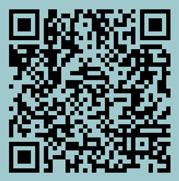

Heritage Wagon Tour with Moon Hitch Wagon Co.
Depart from Johnson County Fairgrounds
These tours are limited to 10 people per time slot. Preregistration is required at Moon Hitch EventBrite site- scan the QR code to the left.
Meadow Wool Mill Dye Workshop
9 am, Mountain Meadow Wool Mill
Join the dye experts at the Mill for a great workshop on all things dyeing! Participants will be provided a hat for dyeing that will be finished and available at the MMW Mill booth later Saturday afternoon. Pre-registration is required for attending this workshop. For more information and registration scan the QR code to the left.
Musical Artists will be featured throughout the day at the vendor fair!
Saturday, july 12
Wool Education- The Nuts & Bolts
9:45 am, JCF Exhibit Hall
Join Bryce McKenzie for a wealth of knowledge on wool. Have questions you have been wanting to ask? Bryce will be ready to answer them to aid in your management decisions!
Lamb, It’s What’s For Dinner
10 am & 3 pm, JCF White Tent
University of Wyoming meat scientist, Cody Gifford, will present various lamb cuts and preparation options. Participants will also enjoy some savory samples. This program is a must for those interested menus
Shearing Demonstrations
10:30 am & 2:30 pm, Johnson County Fairgrounds
Kerr Shearing will join us this summer to demonstrate how to properly shear sheep. This crew shears thousands of sheep each year across the Intermountain West.
Children’s Activity Station
9 am-4 pm, Johnson County Fairgrounds
Join us at the Sheep Wagons for coloring, shearing (children friendly version), and so much more!
The History of Sheepherding in Johson County
11 am, JCF Community Building
Nancy Tabb, local historian, will regale us with a full history of sheepherding in Johnson County. Johnson County is home to a colorful, sometimes dark, but also beautiful history when it comes to the sheep industry. Join us for all of the tales!
Wool Product Creation & Marketing
12:45 pm, JCF Community Building
Ever wondered what’s entailed in creating and marketing wool textiles, garments, and more? Join the Mountain Meadow Wool Mill interns for a full lesson!
Yearling: a sheep that is one-year old.
Hogget: a sheep that is between one and two years old.
Flock/Herd: a group of sheep assembled together.
Band: generally refers to a group of approximately 1,000 sheep.
Mob: a group of sheep that has been raised in a very similar manner and condition for an entire season.
Johnson County Fairgrounds (JCF) 18 Fairgrounds Road Buffalo, WY 82834
Johnson County Fairgrounds Map available on page 29.
ALL DAY, Johnson County Fairgrounds
There will be demonstrations of shearing, carding, spinning and weaving, along with some samples of raw fleece and descriptions of how it is cleaned and washed from the Laramie Fiber Guild. The loom will be warped ahead of time with hand-spun natural-colored wool yarn, and spinners will produce more yarn for the weaving of a shawl, which will be completed at the event.
Wildlife & Working Lands, Working Together
2:00 pm, JCF White Tent
Each year we work to highlight how wool growers, wildlife, and working & wild lands work together towards many common goals. This year, is no different and we are bringing in a dynamic and highly involved speaker, Jess Johnson, Government Affairs Director of the Wyoming Wildlife Foundation
2:30 pm, JCF Community Building
The Wyoming Wool Growers Association will host its annual summer meeting and approve the coming year’s budget, hold elections, and reflect on the previous year and plan for the upcoming year for the Association. All are welcome.
Art & Woolcraft Silent & Virtual Auction
5:30- 7 pm, JCF Community Building
Continue to browse the Art & Woolcraft show and place bids for your favorite pieces for a chance to own them. Interested parties can bid in-person through the silent auction or through the Wyoming Sheep & Wool Festival Facebook page where each piece will be posted and bids can be made through comments. Winners will be announced at 7 pm during the Sheepherders Come Bye Awards Dinner. Cash bar will open.
Saturday, July 12
Sheepherders Come Bye Awards Dinner
6 pm- 8 pm, JCF Community Building
The Wyoming Wool Initiative and Wyoming Wool Growers Association host a beautiful evening of celebration and recognition of Wyoming sheep producers. The WWI and WWGA will give annual awards and recognize the winners of the Art & Woolcraft Show and Basque Ball Sheepdog Trial. Tickets required ($25/person); limited availability at the door. Menu will feature lamb. Cash Bar. See program on page 15.
Live Music & Dance with Tris Munsick & the Innocents
8 pm- 10 pm, JCF Community Building
Let loose and wear your dancing boots! Following the Sheepherders Come Bye, Tris Munsick will put on a show to remember! No ticket required for this free party, so come join us!
Sunday, july 13
WWGA Festival Committee Meeting & Clean-Up
8:00 am, JCF Community Building
The commitee will meet to evaluate the festival and do final clean-up on the grounds. If you would like to be involved, please attend!
WWGA Board Meeting
10:00 am, TA Ranch
The WWGA board will conduct its monthly board meeting over brunch at the TA Ranch. Closed Meeting- WWGA Board members only.
Mule/Muley: a crossbred sheep.

Colostrum: the first milk a ewe produces after giving birth, containing antibodies and concentrated nutrients for the lambs.
Crutching: act of shearing wool from between the rear legs and around the tail of the sheep.
See you in Powell, WY in 2026!
Vendor booths are located around the Community Building, Exhibit Hall, and Needlecraft building at the Johnson County Fairgrounds.
Mountain Meadow Wool Mill 22 Plains Drive, Buffalo, WY
Jim Gatchell Memorial Museum 100 Fort St, Buffalo, WY
Pretty Pelts: The Wyoming Wool Growers Association is the statewide organization for Wyoming sheep and wool producers and is the host of the Wyoming Sheep & Wool Festival. Stop by the WWGA booth to pick up a membership application, ask questions, or purchase a beautiful sheep pelt, wool wax creams and lotions, and many other American sheep/ wool products.
Support the Foundation: The Wyoming SHEEP Foundation was founded by Wyoming Wyoming Wool Growers Association as a 501(c)(3) nonprofit organization working to preserve and promote our state’s sheep industry heritage. The Wyoming Sheep & Wool Festival is a project that fits right into the mission of the SHEEP Foundation as revealed in the acronym “SHEEP” which stands for “Sheep Heritage, Education and Environment Projects.”
Mountain Meadow Wool Mill: Head on over to the Wool Mill for some amazing tours, knowledge and American made wool products! Address: 22 Plains Drive, Buffalo, WY
Rock Creek Watering Hole: Come experience life as a sheepherder! Enjoy sleeping in an authentic sheep camp on a 5th generation working sheep ranch amidst the beautiful sagebrush covered mountains along a fish filled creek. We will supply you with all of your meals, including gourmet lamb suppers. You can either spend the day relaxing in the Rock Creek oasis, or ride along with sheep woman, Marie McClaren, to learn about and get firsthand experience of day to day tasks. The tasks include, but are not limited to, moving/supplying camps, shearing, lambing, docking, trailing, visiting with the Peruvian sheepherders and so much more!
Campbell County Rockpile Museum: Join the museum for an interactive homestead experience!
Cottonwood Creek Wool: Wool pellets for your garden. Made with 100% Wyoming wool, the pellets increase nitrogen and oxygen in the soil.
US Forest Service- Bighorn National Forest: The Buffalo USFS Office will be at the Festival to provide information on grazing permits, recreation, conservation, and so much more. They will also discuss how the local offices work alongside the agricultural industry to preserve Wyoming rangelands.
NRCS: Learn about the watershed, projects in the county and the collaboration between Natural Resource Conservation Service (NRCS) and Conservation Districts.
WY Livestock Board: Meet with staff from the WLB and learn about the department’s role in protecting livestock from disease and theft.
Sheep Wagon Exhibit: We will have working sheep wagons from across Wyoming set-up for you to explore!
Jim Gatchell Memorial Museum: The museum will have a historic sheep exhibit and will remain open throughout the event. Address: 100 Fort St, Buffalo, WY.
Laramie Fiber Guild: The Sheep-to-Shawl demonstration will include carding, spinning and weaving, along with demonstrations of cleaning raw wool samlpes. The loom will be warped ahead of time with handspun natural-colored wool yarn, and spinners will produce more yarn for the weaving of a shawl, which will be completed at the event.
Eliza Blue: A writer, folk musician, and rancher living on the short grass prairie of western Dakota. Eliza will play two sessions on Saturday during the vendor fair.
Fleece: term to describe the wool from a single sheep in the ‘grease’ state.
Greasy Fleece: a fleece that has not been washed, remaining in a similar state as when it was shorn.
Lanolin: the natural oil and grease found in the sheep’s wool.
Jug: an individual lambing pen in which a ewe and newborn lambs bond.
Tupping: the act of breeding/mating ewes and rams.
Taste of the Wind: Wyoming raised felted pelts, tanned hides, clean ram skulls, and lamb snack sticks will be available.
Foot Hills Eclectic Design: Explore a variety of artistic creations ranging from fiber art to wood carvings and many things in-between while demoing fiber art techniques.
Guided Rock Farms: Fresh milled flours, lamb, yarns, Navajo Churro rugs, batting, and more.
Beginner Shearers: Stop by the booth to learn how to join a shearing crew as a beginner shearer, receive more training, and more opportunities to hone your skills.
Johnson County Tourism Association: The JCTA will be on site to answer all of your questions about the town of Buffalo and Johnson County. Need directions? Places to stay or eat some lunch? Check out their booth!
UW Anthropology Department: Drop by the booth to visit about Wyoming’s agricultural community needs and how the University of Wyoming can help provide more resources.
Barnum Bee Company: Venture on over to Tori’s booth to explore these hand made soaps and other value-added Bee products.
Kid’s Sheep Camp Circle: Head to the sheep wagons for some kid friendly acitvities including lots of coloring, explore a sheep wagon, bum lambs, wet felting, and more.
Sand and Sage Saddle Pads: Wyoming-made pulled wool saddle pads. These pads are built to last and are easily customizable.
Hand-Dyed Yarns: Hand dyed yarns available for sale at this booth!
Leaves & Feathers: Visit this amazing booth exhibiting and selling raw wool fleeces, hand painted dishes, paintings, and other crafts.
Heartfelt: Looking for wool art? Look no further! This booth will exhibit beautiful wool art for sale, plus Patty will also have art featured in the Art Show & Auction (check those out in the JCF Community Building).
Wyoming Yarn & Fiber: Stop by this booth for more hand dyed yarn for purchase!
Westwynd Fiber: Visit Joleen for Navajo-Churro roving, pulled wool pads, and mohair products.
LZ Craft Company: Find your leather craft needs here with Lisa!
Boni’s Art & Pottery: Boni will be exhibiting and selling handmade pottery, art prints, 3-D print images, and paintings. Her beautiful work will be on display at her booth and in the Art Show (JCF Community Buildingl).
Spinning, Weaving and Other Demonstrations: Join our vendors as they demonstrate how to spin fiber into yarn and then create beautiful textiles through weaving.
Wyoming L.E.A.D.: Founded in 1984, Wyoming Leadership Education and Development (L.E.A.D.) is an adult education program designed to hone the skills for individuals who aspire to become leaders in agriculture and Wyoming communities.
Moon Hitch Wagon Co.: Moon Hitch takes you on a fun-filled authentic, guided tour over Buffalo’s historic landscapes and into the heart of its origin. Gain a glimpse of what life was like for our ancestors traveling into this country from behind a team of horses.
Scan the QR to register for any Moon Hitch Wagon tour!
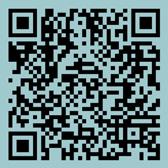

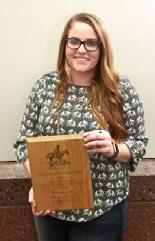
Jaycie Arndt

Jared Zierenberg

Alison Crane, Ph.D.

Barton Stam
Friday, July 11th
Welcome & Introduction- Meet-up Location
8:30 am, 1415 Fort Street, Buffalo, WY
Post-Fire
9 am, drive to location
Brian Mealor & Jaycie Arndt will cover research and recovery tools that can be utilized for grazing success post-fire on rangelands. Wonder about the best techniques for invasive plant management? Learn practical application of management tools during this session.
Predator Management Post-Fire & Golden Eagle Update
10:15 am
Director of Wyoming USDA-APHIS Wildlife Services, Jared Zierenberg, will speak on the shifts in predator management following large landscape fires. Alison Crane, WWGA Executive Director, will provide a brief update on permitting for Golden Eagle management with further input from Jared.
---Lunch on the Mountain--provided to registrants
Keeping Working & Wild Lands Working Together: How Do We Continue?
1 pm
Barton Stam will discuss the benefits of utilizing sheep for targeted grazing and management of invasive plant species, including prescribed management.
Register by scanning here: Lunch not guaranteed if registering after 7/1/25.

saturday, July 12th
6:00 pm Welcome & Dinner
Art & Woolcraft Silent Auction
6-8 pm, tickets required ($25)
Limited availability at door
JCF Community Building
7:00 pm Introductions
Arts & Woolcraft Awards
People’s Choice
Children’s Choice
Category Winners
Grand Champion
Basque Ball Sheepdog Trial Awards
UW Lamb-A-Year Awards
WWGA Awards
Harold Josendal Patron Award
Compadre Award
Amigo Award
Portavoz Award
7:45 pm Silent Auction Conclusion
8:00 pm Live Music & Dance w/ Tris Munsick & the Innocents
10:00 pm Conclusion of Event
Harold Josendal Patron Award: presented to a sheep producer who has made substantial contributions to the Wyoming sheep industry and the WWGA and has exhibited dedicated volunteer commitment and service above and beyond the call of duty.
Compadre Award: recognizes industry contributions from a professional in a position or field related, either directly or indirectly, to sheep production. Recipients must show a strong and significant contribution to the industry, its organizations, and its producers, above and beyond that called for in their professional capacity.
Amigo Award: recognizes outstanding achievements in innovative management of resources or application of new techniques to enhance flock production/protection or natural resource management as well as a strong commitment to teaching and educating producers.
Portavoz Award: recognizes outstanding year-long coverage of the sheep industry by members of the media who have exhibited a strong commitment to fair, balanced, and consistent reporting and coverage of the sheep industry, locally, statewide, and/or nationally.


Scan here to learn more about Tris Munsick & the Innocents
As a top act in the region, Tris Munsick & the Innocents continue to climb and share their brand of Western country with audiences near and far. They have broken the mold with their unique blend of traditional and modern sounds, and fans resonate deeply with the authenticity ever-present in their music. In the words of recording artist Chancey Williams, “Tris Munsick is the real deal. He can write about and represent cowboy culture because he was born in it, and he lives it. Tris is an artist that is really finding his voice in the American West.”
Constantly on the road, the band has shared the stage with Big and Rich, Lyle Lovett, Blackhawk, the Eli Young Band, Cody Johnson, Casey Donahew, Marty Stuart, and many more as well as performing at the National Finals Rodeo Opening Ceremonies in Las Vegas, NV. Hailing from the eastern slope of the Big Horn mountains, Tris Munsick & the Innocents shine a brand-new light on modern cowboy music. Catch them on the road in 2025!
Saturday, July 12th, 2025 | 8-10 pm
Community Building, Johnson County Fairgrounds
Free, no ticket required
Kelly Barlow, co-operater of Gourmet Lamb of Wyoming, a family-owned and operated business located at the Barlow Ranch situated on 18,000 acres approximately 37 miles west of Gillette. Kelly and Eric raise Dorper sheep, which thrive in our arid climate. Dorper lamb meat has a finer texture and milder flavor than other lamb and all of their sheep are grass-fed, with no antibiotics or hormones – straight from the prairie to the processor!


Bryce McKenzie is the 4-H Educator with the University of Wyoming Extension serving Johnson Co. He was Assistant Coach of the UW Collegiate Wool Judging Team from 2018-1019 with a team that placed first at the National Western contest in Denver. Bryce continues to coach local 4-H and FFA youth teams in livestock and wool evaluation.
Jessi Johnson leads Wyoming Wildlife Federation’s efforts to advocate on behalf of wildlife and wild places through policy and local advocacy. She has a deep appreciation for wildlife and wild lands. Jess’s love for conservation spans beyond WWF, as well. She’s a co-founder and advisory board member of the NWF initiative, Artemis Sportswomen, and serves as the policy seat on the board of directors for 2% for Conservation.

Cody Gifford, Ph.D. Assistant Professor, Meat Science University of Wyoming


Nancy Tabb History Archivist Johnson County Library

From L to R: Micah Most, Alison Crane, Heather Jones, Marie McClaren, Barrie Bryant, Cat Urbigkit, Lindsay Stewart, Gwen Geis, and Whit Stewart.
Gwen Geis
Acting President
Heather Jones
Director - Region 1
Ivan Laird
Mike Curuchet
Acting Vice President
Marvin Schmidt
Director - Lamb Feeder
Alodie Moore Director- Small Flocks Treasurer & Financial Director
Joe Bailey Mills
Shaun Sims
Collegiate Woolgrowers Rep Acting Director- Region 3
Ex-Officio
Mike Curuchet
Immediate Past President
Ex-Officio
Whit Stewart, Ph.D.
UW Sheep Specialist
Ex-Officio
Marcia Federer
Auxiliary Representative
Ex-Officio
Alison Crane, Ph.D.
Executive Director

Historic Stock Trails Map Source: Tales of the Trails by Sue & Patty Myers.
Want to learn about the Johnson County War? Scan the QR code below:
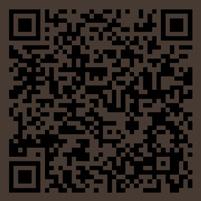
Or head to the TA Ranch: 28627 Old Hwy 87, Buffalo
from Tales of the Trails, by
Sue & Patty Myers;
by Cat Urbigkit
During the years of open range, the movement of cattle and sheep across hundreds of miles was common. Cattlemen based in southern Wyoming had free range north to Canada. Sheepmen, like Patsy Healy in 1880, ranged across Utah, Nevada and Idaho before moving into Wyoming. The Frewens of the 76 Ranch used what is now called the Mayoworth Stock Trail.
The Big Horn Mountains have been used for summer grazing since 1883 when D.A. Kingsbury brought the first flock of sheep into Johnson County. By the time Healy arrived in 1891, cattle were less numerous, and the habit of summer grazing in the Big Horns was well established. The selection of the cooler mountain pastures was healthy for both the animals and for the lower pastures which could lie fallow during the dry summer months, leaving better pasture for winter grazing. The cycle includes a journey to the mountains in the spring and the journey home in the fall. The trailing process deviated with shipping habits. With railheads at both Arminto and Clearmont, the herds could be trailed in either direction. Today’s shipping from the mountains is simply a derivation from the old habits. The traditions of driving cattle and sheep over the established trails have changed considerably over the years, and yet
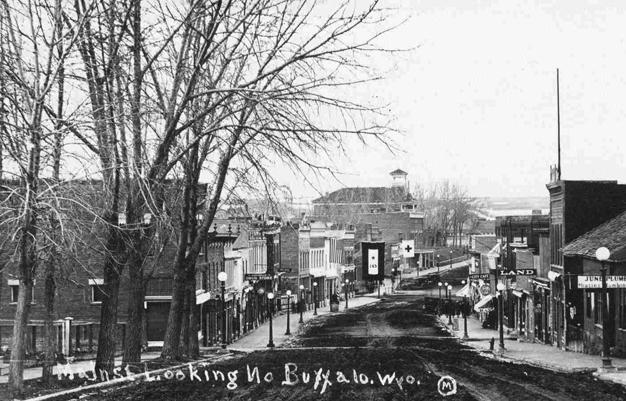
they remain basically the same. The livestock owner had to change his tactics when the land changed from open range to homestead claims. Homesteaders resented the damage caused to gardens and grass by wandering or trailed stock and began fencing off their claims.
Although these fences were hotly contested at that time, nowadays they are actually appreciated by most herders. Eventually, fences were built dividing the open range into protected areas, leaving the roadways along the fencelines for transportation and trail drives. All county roads can be used as stock drives, and Wyoming law provides the county commissioners the authority to protect herders and landowners.
Sometimes county roads needed to be changed, widened or diverted in order to avoid crossing private lands or to make a direct line. To this end, stock driveways were designated. By 1934 when the Taylor Grazing Act ended homesteading, the stock drives were well established. In northern Johnson County, two came from the east: one from the Double Crossing near Clearmont/Ucross to Tipperary, and the other from the Red Hills. They joined up near Trabing to head west up Crazy Woman Hill. In southern Johnson County, county roads converge on the Mayoworth Stock Drive near Kaycee. In addition to roadways, the Stockraising Homestead Law of 1916, which allowed the 640-acrehomestead, withdrew stock drive land. The majority of the public land was withdrawn from homestead entry in 1917 with additionals in 1927, 1932, 1938 and 1941. Johnson County now has about 24,000 acres of public land reserved as stock driveways and stock rests. Nearly 13,000 of them are along the Mayoworth Drive between the old schools and Dull Knife Reservoir. Senator John B. Kendrick, a cattleman from northern Wyoming, is credited as being farsighted enough to protect stockgrowers by sponsoring a bill establishing stock rests on public lands.
For many years, the Johnson County Woolgrowers supervised the use of the trails and encouraged the maintenance of fences and water holes. Ranchers were fairly cooperative in making the trails easier by trading lands so steep hills could be avoided. And the Woolgrowers cooperated with the ranchers as they arranged land trades to prevent unequal pasture divisions. Most neighboring ranchers allow the crossing of private land. Whether it was written law or simply a law of the land, sheep were expected to move six miles a day and cattle 10 miles
a day. And they still do.
In the early days, the Woolgrowers regulated the use of the trails which nearly always started at the shearing pens. There were the Meike pens at Sussex, Trabing pens southeast of Buffalo, Henderson shearing plant, Healy pens at TW, and Esponda pens on Crazy Woman among others. After a bunch of sheep were sheared, they started on trail with their herders. Most of the time, these herds would be started a day apart, but sometimes herds from other pens would arrive at a rest stop at the same time, and the first come-first served rule would go into effect. This might result in vocal frustration or irritation, but seldom caused any real trouble. When administration of the stock drives by the BLM began, their supervision followed the format established by the Woolgrowers with cooperative efforts for trail improvements such as water and rest stops. Landowners along the way are still responsible for fencing, and a rider still checks the trail. The trail fees, which are based on AUM (animal unit month) and overnights at rest stops, are usually recycled into trail improvements. A Trail Committee, with representatives from the Woolgrowers, BLM, Forest Service, and county agent serves in an advisory capacity for improvements, changes, and scheduling. Big Horn stock drives carry historical names which identify their locations: 33 Mile, Crazy Woman, Arminto, Mayoworth, Hazelton. Locations used as rest areas, watering holes, or corrals are Powder River, Billy’s Flats, Scotch Corrals, Bear Trap, Pass Creek, Fisher’s Springs, Burke’s Hill, John Jay Spring, etc. For herders, the names evoke more than locations -.they signify grass and water conditions, memories of previous drives, and prospects for the next.
Source: Tales of the Trails (1990), by S. & P. Myers.
Wyoming’s range sheep production system is a system called transhumance. It involves sheepherders moving with their flocks into higher elevations for summer grazing as winter snows recede, and trailing back down into lower elevation winter ranges. It’s a system that has long been practiced in Old World regions by Spanish, French, and Basque herders, and has been adapated for western rangelands.
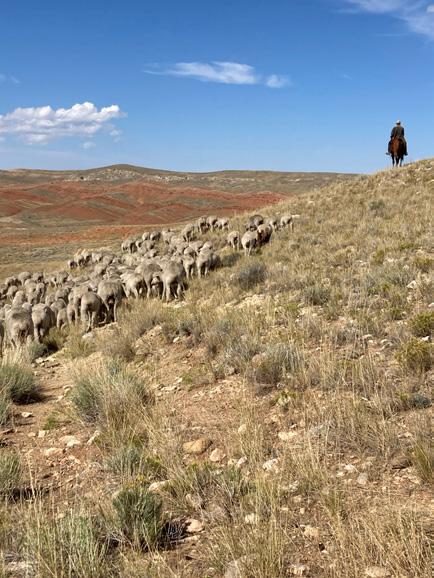
Sheep producers use two types of working dogs with distinct jobs. Herding dogs (Border Collies, Australian shepherds, etc.) are trained to move the sheep flock as directed by the herder, while the larger livestock protection dogs (Great Pyrenees, Akbash, etc.) help to keep the sheep safe from predators.
A bellwether is a sheep that leads the flock, often with a bell hanging from its neck. Traditionally, a sheep leading the flock is a wether (a neutered male sheep), but sometimes it’s actually a friendly ewe that leads the flock.
Bells help the herder know where the sheep are located at any given time. The ability to hear the bells helps to locate the sheep in low-visibility situations (like during snowstorms or when the sheep are in thick brush or timber), or when the flock is spread out to graze on rugged rangelands. Any sudden change in the sound of the bell, such as fast rattling, can alarm the shepherd or a livestock protection dog that a predator has spooked the sheep.
Herders use black sheep or “marker” sheep with bright dye painted on their bodies to keep track of the number of sheep in a flock. Most flocks have 1 marker sheep per 100 white sheep. So, if a sheepherder only counts 3 marker sheep in a flock of 400, that means there are sheep missing.
A camp tender comes from the main ranch to check on the sheepherders, deliver groceries and supplies, and move the sheep wagons as
Sheepherders live in sheep wagons, their homes on wheels! The sheep wagon was invented in Wyoming in 1884. James Candlish of Rawlins and Frank George of Douglas are often credited with the invention, while Marshall Buxton of Casper is thought to have improved on the initial design.
Some breeds of sheep are specialized for wool production and are shorn yearly.

Most Wyoming range sheep are of these wool breeds such as Rambouillet, Targhee, Columbia, etc.
In contrast, hair sheep breeds naturally shed their wool and are generally used for meat and milk production. Hair sheep breeds include Katahdin, Dorper, etc., and are very popular in farm flocks.
Shearing (cutting off the sheep’s wool) is much like getting a haircut and does not harm the sheep. Sheep in this region are shorn once a year and their soft, fine wool is used to make high-quality clothing and outdoor apparel.
Shearing helps to prevent the sheep from overheating in the hot summer months and keeping the wool trimmed away from the eyes prevents wool blindness. Shearing a ewe prior to lambing helps the lambs find the nipples for nursing much more easily. Shearing is a good animal health practice.
Most shearers in the west make their living shearing sheep. Working on a crew is typically seasonal, meaning, the shearers work on a crew for the spring. Some will continue shearing throughout the year in lamb feedlots.


do sheep get branded?
Yes, sheep are branded to identify the flock owner, but brands are applied with a special wool paint rather than a hot iron. Sheep owners on the western range use both brands and earmarks to identify members of their flocks (as well as ear tags).
The University of Wyoming was the first institution in the country to offer a Ph.D. in wool. In 1907, the university established a wool department and wool lab under the direction of longstanding Wyoming Agricultural Experiment Station Director, John Hill. The program received international recognition for improving wool scouring, coring, and sheep culling techniques. While the wool lab no longer exists, Wyoming’s sheep program has been revitalized in recent years under the direction of Dr. Whit Stewart.


The Wyoming Sheep & Wool Festival is a project of the Wyoming Wool Growers Association and the Wyoming SHEEP Foundation. The festival is supported in part by the grants from the Wyoming Arts Council, with support from the National Endowment for the Arts and the Wyoming Legislature, and from the Wyoming Cultural Trust Fund, a program of the Department of State Parks and Cultural Resources. The 2025 Wyoming Sheep & Wool Festival is made possible with the partial funding by the Wyoming Humanities Council.
Support for the festival provided by:
Johnson County Tourism Association
Linda Lulias & Wendy Auzqui
The Camino Family
MTR Ranch Supply
Spearhead Ranch
Julian Land & Livestock
McCormick Ranch




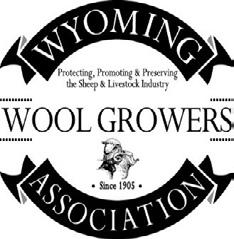









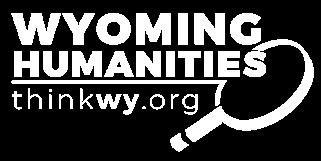









@wysheepandwoolfest
#wyosheepandwoolfest
wyomingsheepandwoolfestival.com